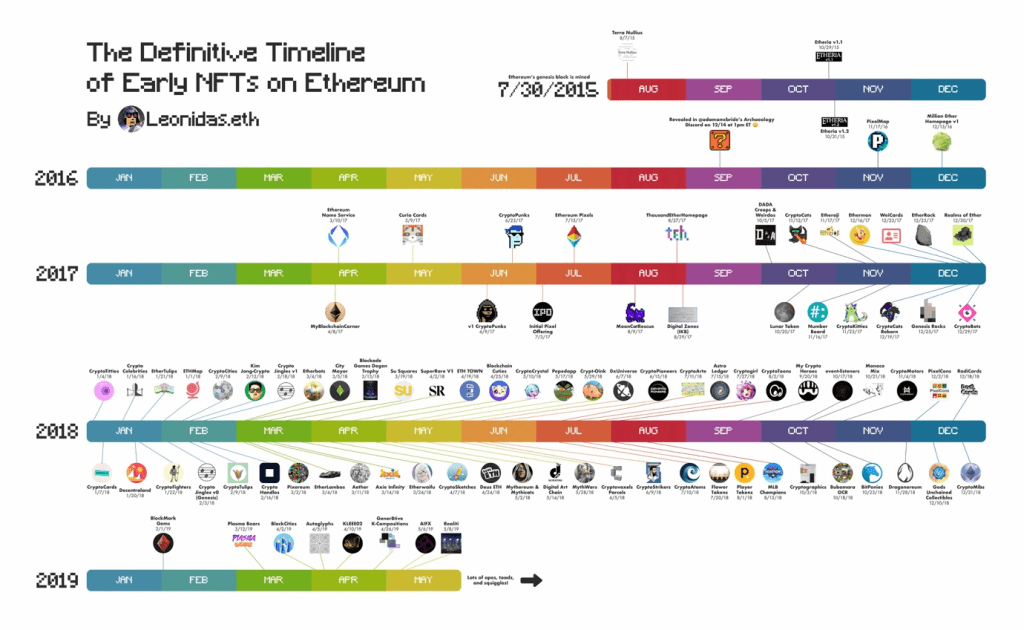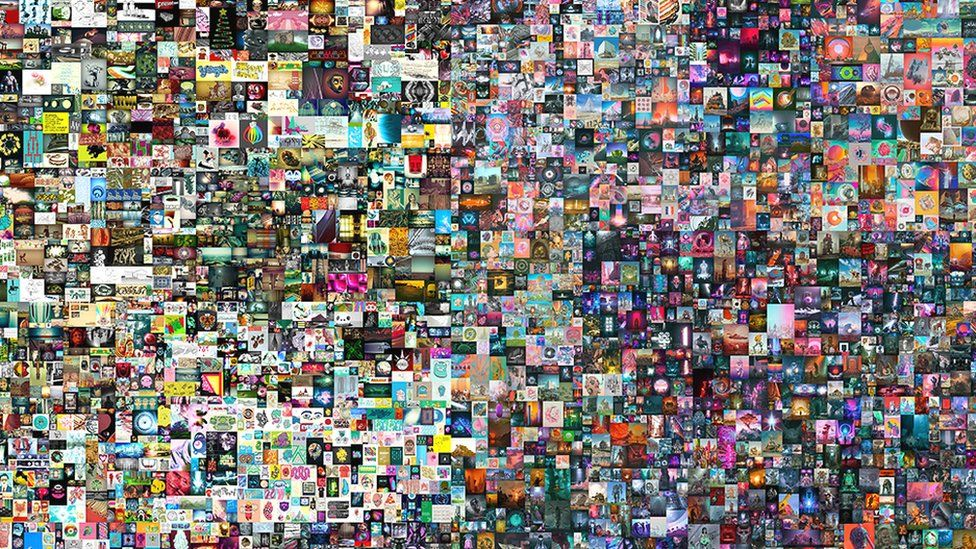Why Do People Buy NFTs?
Last year, DJ and producer Steve Aoki made more money from selling a non-fungible token (NFT) than he had earned in 10 years from music royalties and advances. His hairy collectible, dropped and sold on an NFT marketplace known as Nifty Gateway, was auctioned for $888,888.88, joining the ranks of other record NFT purchases that helped propel the popularity of NFTs to greater heights. Aoki’s is a prime story that demonstrates people’s ever-growing interest in NFTs. So why do people buy NFTs? Spending thousands, hundreds of thousands, or even millions for digital pieces of NFT art?
Several reasons, some of which DJ Steve Aoki highlighted, influence the NFT buying craze.
In this article I'll answer that question of “why do people buy NFTs?” in detail and explain why you should consider adding NFTs to your investment strategy, too. First, let me explain exactly what are NFTs, including their history.
What is an NFT?
A non-fungible token or NFT, for short, is a unique, non-replicable digital certificate or token registered in a blockchain that records ownership of an asset. The nature of the digital assets varies, giving rise to different types of NFTs. These include:
- Collectibles
- Artwork
- Video games
- Tickets
- Music and other media
- Memes
- Metaverse items
- Memes
- Virtual apparel and accessories (fashion items)
- Utilities such as domain names based on the Ethereum Name Service
Of the various categories of NFTs, collectible NFTs were the most popular as of January 2022, according to data from NonFungible.com, a website that considers itself the world's largest NFT data resource. Utilities were the second most popular NFTs, followed by art. Finally, metaverse and games completed the list of the NFTs with the highest sales. But before detailing why people buy NFTs, let’s explore their history.
History of NFTs
The year 2021 represented the meteoritic rise of NFTs. In fact, the Collins Dictionary named NFT as 2021’s word of the year. And for a good reason. While NFTs broke into the limelight in 2021 and are primarily associated with the Ethereum blockchain, they have been in existence since the early 2010s, long before the introduction of Ethereum introduction. During its formative years, though, NFT was just a concept.
History of NFT: Pre-2014
In late 2012, mathematician Meni Rosenfeld published a white paper discussing the colored coins concept. This concept allowed for the existence of non-fungible coins that were distinctive from the fungible bitcoins. The colored coins would have special attributes and value independent of the face value of the bitcoins that supported them – they would use existing Bitcoin infrastructure. People would then use the coins for smart property, commodity certificates, alternative currency, bonds, stock, and decentralized digital representation of physical assets.
According to Meni, the colored coins held the potential to promote the decentralized trade of items that people could previously not exchange via traditional means. This is because individuals could store and transfer them without using a third party. The white paper discussed the implementation of colored bitcoins and potential use cases.
Unfortunately, Meni’s vision of colored coins was never realized. Still, it provided a robust foundation for NFTs. And it took less than two years for this to happen.
History of NFT: 2014-2019
In May 2014, Kevin McCoy minted the first NFT on the Namecoin blockchain. His was a series of abstract images, named Quantum, that show the cycle of life – birth, death, and rebirth. McCoy capitalized on the idea that he could use blockchain technology to create unerasable ownership of digital images. McCoy would later sell the NFT for $1.472 million in 2021.
A year later, in July 2015, Ethereum was released. And with it came the minting of the first NFT based on the Ethereum blockchain in August 2015. This first Ethereum-based NFT set the stage for numerous other releases. By April 2019, about 25 NFT projects had been created and released. Examples include:
- Realiti (2019)
- Autoglyphs (2019)
- CryptoPunks (2017)
- CryptoCats (2017)
- Plasma Bears (2019)
- Gods Unchained Collectibles (2018)
- MLB Champions (2018)
- CryptoArte (2018)
- CryptoStriker (2018)
- Cryptovoxels Parcels (2018)
- PepeDapp (2018)
- SuperRare V1 (2018),
- Axie Infinity (2018), and more
These categories of NFTs vary in nature from games – Axie Infinity and Gods Unchained – that use NFTs and blockchain technology to NFT projects, such as CryptoPunks that enable buyers to purchase limited and unique 8-bit collectible characters.
Summary of the Early History of NFTs (source)
History of NFT: 2020
The release of NFT games such as Axie Infinity as well as NFT collectibles in games such as Gods Unchained demonstrated that NFTs had proliferated into gaming. And in 2020, NFTs entered even more sectors, including finance, as well as extending their grasp on gaming and art.
2020 also saw the introduction of Rarible, a decentralized exchange for NFTs. Rarible set itself from the regular centralized exchanges in use at that time, namely OpenSea and SuperRare. Specifically, it offered any user the ability to govern the exchange of items provided they had decentralized finance (DeFi) tokens. According to observers, Rarible was one of the initiatives that helped increase the volume of NFTs traded.
Another was the then-novel idea of dividing NFTs into fractions that could then be sold individually on decentralized exchanges such as Uniswap. Previously, investors were required to buy a whole NFT – it could not be separated. Recognizing the limitations that this presented, NFT developers created tools that split up NFTs into thousands of segments that can still be conflated again to reform a whole. The subdivision of vast swathes of land into plots is a prime example of this fractionalization of NFTs.
The subdivision helped eke out more money from NFTs, which would otherwise not attract buyers who did not want to purchase the entire NFT. As a result of the various innovations, the NFT sales grew to uncharted territory. In 2020, the value was just a few notches shy of $100 million. But it was not until 2021 that the real growth was realized.
History of NFT: 2021
The year 2021 saw record NFT purchases, each of which made headlines, increasing the popularity of the digital token. The meteoritic rise of NFTs was due, in part, to the growth of cryptocurrencies also witnessed in 2021, which resulted in record prices of Ethereum, Bitcoin, and other cryptos.
The first-ever tweet by Twitter Founder Jack Dorsey, for example, was auctioned for a whopping $2.9 million. Mike Winkelmann, better known as Beeple, sold his NFT artwork for $69 million. Even so, not all NFT purchases crossed the $1 million threshold. In fact, according to data from NonFungible.com, NFT purchases valued at $1,000 and below accounted for the largest proportion of all 2021 sales, with some of the biggest winners including CryptoPunks and Bored Ape Yacht Club, both of which share a common attribute, as we’ll’ detail later.
Most Expensive NFT by Beeple (source)
As a result of the increased popularity, the value of NFT sales crossed the $25 billion mark in 2021, up from just $94.9 million in 2020. In Q4 2021 alone, the sales had climbed to $11.6 billion, representing a quarter-over-quarter increase of just under $1 billion from Q3 2021 figures. The third quarter saw the meteoritic rise of NFT sales, with figures jumping from $1.3 billion in Q2 2021 to $10.7 billion.
This growth was not by fluke. It resulted from the interest diverse demographics had in NFTs. But what might have triggered the increased increase? Why is NFT so popular? Why do people want NFTs? In the section below, we’ll detail why people buy NFTs.
Why People Buy NFTs and Why You Should Too
People buy NFTs because of the following reasons:
- Scarcity
- Irreplaceability and non-replicability
- Investment class
- Support for creators (directly)
- Distrust in fiat currencies
- Crypto community belonging
1. Scarcity
Scarcity has been acclaimed as the most important reason why people buy NFTs. It is considered the primary driver behind the increased popularity of NFTs. In fact, some creators have incorporated this attribute into their NFT projects. For instance, each of the CryptoPunks and Bored Apes projects comprises 10,000 unique pieces. Each piece’s distinct attribute contributes to its rarity and, therefore, its value.
As a result of this pre-determined scarcity, which ultimately contributes to the value, the Bored Ape collections have seen record purchases. The most expensive Bored Ape, the #8817, for instance, sold for $3.408 million.
2. Irreplaceability and non-replicability
The irreplaceability and non-replicability of these digital tokens also inform why people buy NFTs. Ordinarily, NFTs are recorded on the Ethereum blockchain NFTs are recorded on the Ethereum blockchain, making it easy for buyers to prove the ownership of the assets. The blockchain immutably documents who the creator and the recipient are, technically and figuratively casting everything in stone. This attribute ensures that rogue traders cannot replicate the original for the purposes of ripping off unsuspecting buyers. Similarly, they cannot replace the original NFT as the blockchain prevents this.
These attributes make the digital tokens non-fungible, a term that means each asset cannot be replaced, either wholly or in part.
3. Investment Class
Investors consider NFTs as a modern way of investing in art, likening it to conventional ways of storing wealth. To investors, NFT projects are comparable to traditional investments such as gold and silver or, more recently, bitcoin.
It is noteworthy that some buyers have flipped their NFTs for a profit. In February 2021, for instance, an NFT investor, who in 2020 had bought a 10-second video artwork for about $67,000, sold it for $6.6 million.
4. Distrust in Fiat Currencies
As the pandemic disrupted whole industries, triggering inflation that has continued since, people are increasingly distrustful of fiat currencies. They fear that as the inflation rate increases, the value of their fiat-currency-based investments will erode. In contrast, cryptocurrencies surged throughout the pandemic. And as stated, this uptrend influenced the increased popularity of NFTs.
5. Support for Creators
As Steve Aoki earned hundreds of thousands of dollars following a single NFT sale, he joined scores of other musicians who had pivoted to this form of digital art as a way of eking out extra money. These include Kings of Leon, an American band that released a whole album as an NFT for just $50, Linkin Park’s Mike Shinoda, Grimes, and Shawn Mendes.
According to YellowHeart, an NFT and event tickets marketplace, music NFTs such as what Kings of Leon dropped to improve the artist-fan relationships by enabling fans to own music again. This way, they can support artists in novel ways without necessarily spending thousands of dollars or even millions. Further, it offers value to musicians.
6. Cryptocurrency Community Belonging
According to observers, the cryptocurrency community supports its own. This community creates digital artworks and collectibles for one another, and, in turn, other members purchase them. This belonging, pundits note, explains why people buy NFTs as well as the motivation behind dropping thousands or even millions of dollars on a digital token.
Disclaimer
While scores of people have cumulatively spent billions of dollars, there is no guarantee that the value of the digital assets they purchased will increase. In fact, the owner of Dorsey’s first tweet put the NFT back on sale, but the interest and offers have been dismal. This single case highlights the probability that the NFTs might be operating under a bubble that may soon burst. Thus, though we have highlighted why people buy NFTs and why you should, too, it is important to remain cautious at all times.
Conclusion
The year 2021 saw the rise of NFTs to heights that had never been achieved before. This is despite the fact that NFTs have been in existence since 2014. The increased popularity was due to several reasons. And in this explanation article detailing why people buy NFTs, we have answered questions such as what are NFTs? Why do people buy NFTs, and why do people want NFTs? What is the history of NFTs?






